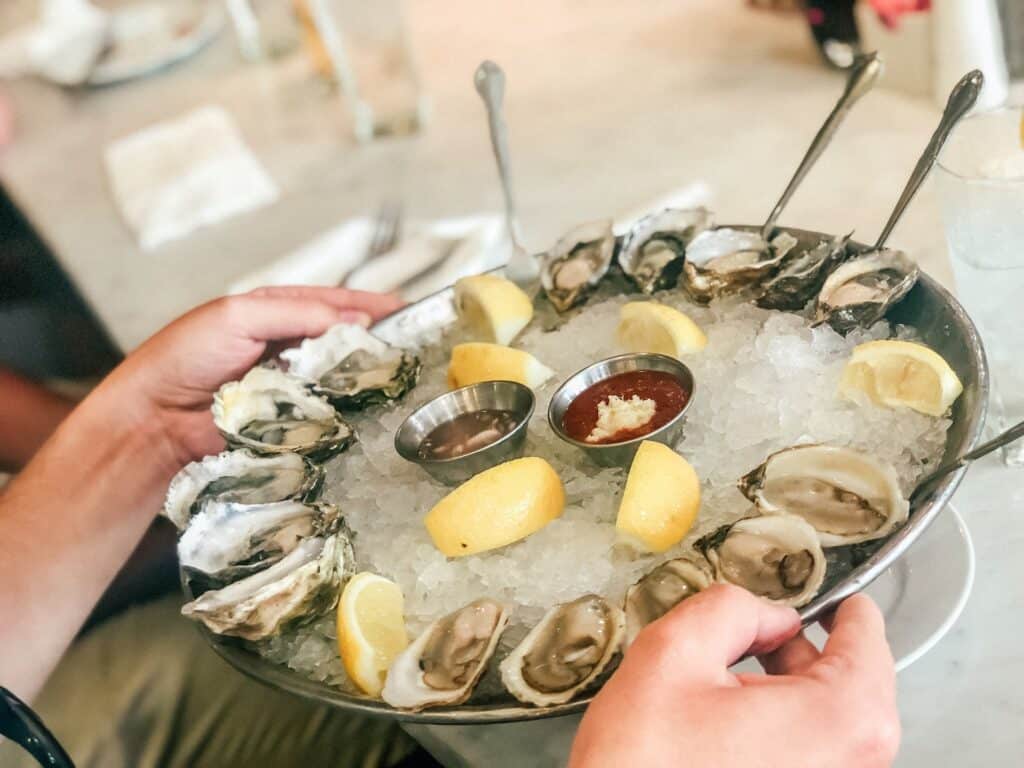I like oysters. Thinking about them brings back a lot of memories, usually involving good friends and hot sauce.
My favorite oyster experiences are intimately tied to Point Reyes, a stretch of Northern California coast with a number of oyster farms. There, you can pick and choose from all different sizes and species with flavors ranging from briny to buttery. After that, it’s your choice to shuck and swallow raw, or maybe spend a little more time warming them over an open fire.
Here’s a couple of things I knew about oysters. They are filter feeders, cracking their shells open at high tide, when the moon is overhead, to strain the passing water for bits of plankton and other digestables. In the process, they clean the water.
With filtration rates as high as 50 gallons/day/oyster, there is growing interest in the use of oyster farms to purify our waterways. They can store excess nitrogen in their shells, as noted in this article here. They can further reduce turbidity, or the amount of particulate matter suspended in water. This excess sediment can affect aquatic life by clogging up fish gills or reducing the photosynthesis capabilities of aquatic plants.
But where there are oysters, the water is clear, a big plus for those communities that farm them. And the apparently positive impact of oyster farms inclines even the most environmentally-conscious of us to make a meal out of these very hard workers.
There are even strict vegans who eat oysters. In addition to the environmental benefits of their cultivation, those who partake cite the anatomic reality of oysters having no identifiable central nervous system. The thinking is that they can’t feel you eating them.
Recently, however, I read an article that may have at least a few vegans rethinking their indulgence.
In 1954, a biologist named Frank Brown collected a bunch of Atlantic oysters, transported them hundreds of miles to a lab in Illinois, and placed them in pans of brine in a sealed darkroom. Every variable was controlled for: ambient and water temperatures, light, currents, and even atmospheric pressure.
He knew that they opened their shells at high-tide and initially, this is exactly what they did. Every day, at around the time the tide would rise in their familiar Atlantic waters, the oysters opened up.
But things started to change. And after several weeks, something very extraordinary happened. All alone in that darkroom and without any kind of outside interference or influence, the oysters had somehow adjusted to local time. They were opening their shells in sync with the moon.
Find out more about how Frank Brown’s research was initially shuttered and eventually revisited to open up a whole new area of study in this article here.
Leave a comment below for posterity or join us in the D&T Chautaqua Discord to discuss this post with other adventurous spirits from around the world.


One of the most humbling aspects of science is not how much we know, but how much we are still learning.
Thanks for the post and the article recommendations within the posts! Thinking of picking up The Human Cosmos: Civilization and the Stars now and reading it.
I loved that oyster article and IMMEDIATELY got the audiobook recorded by the author. I’ll let her read to me 🙂
Very interesting. Never realized the role
Oyster player. In our ocean waters.
Jaza kalla
The more we learn brother, the more we appreciate the elegant balance and perfection of God’s creation. And I don’t think we will ever run out of discoveries. There is so much more we DON’T know!